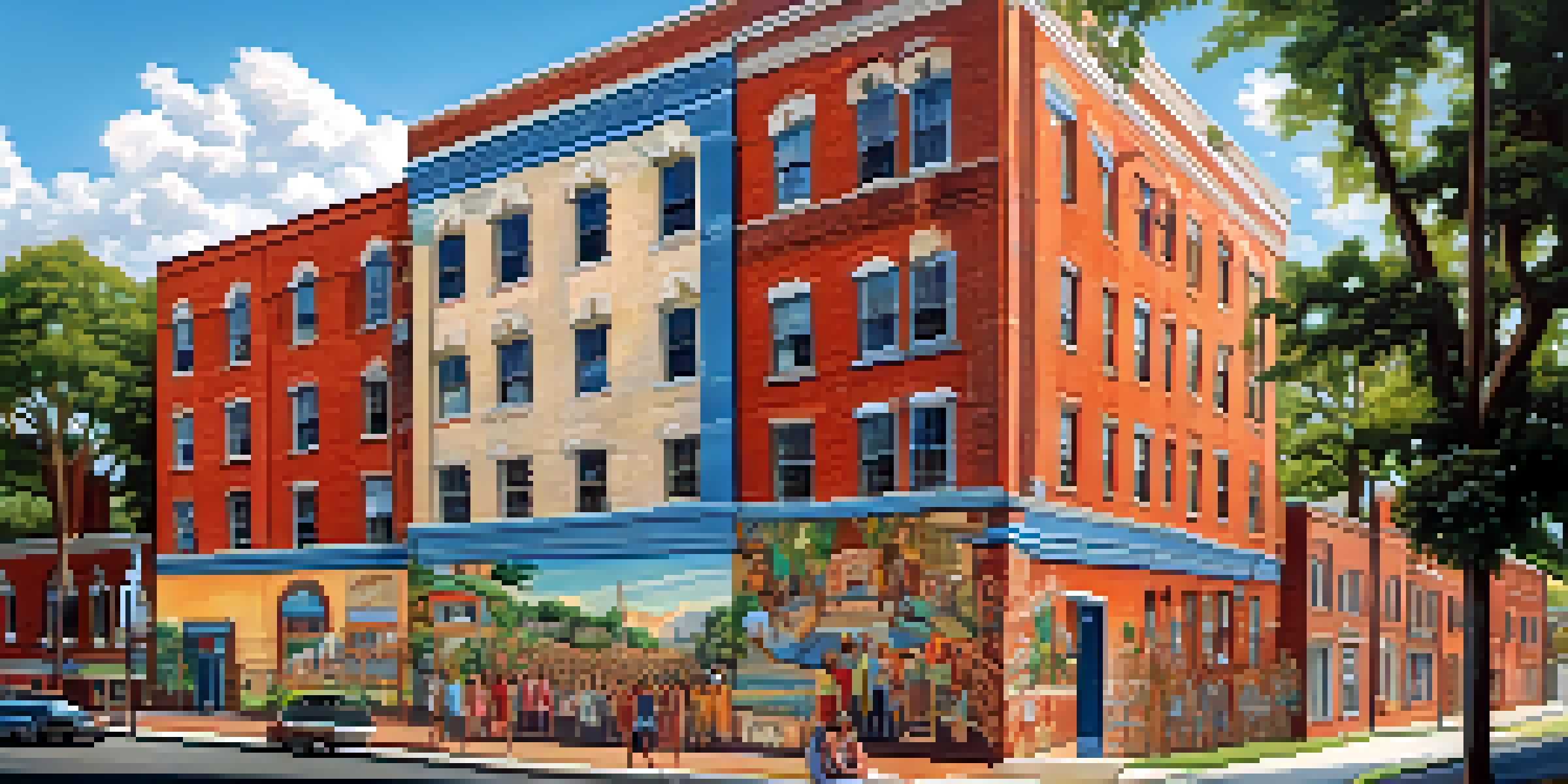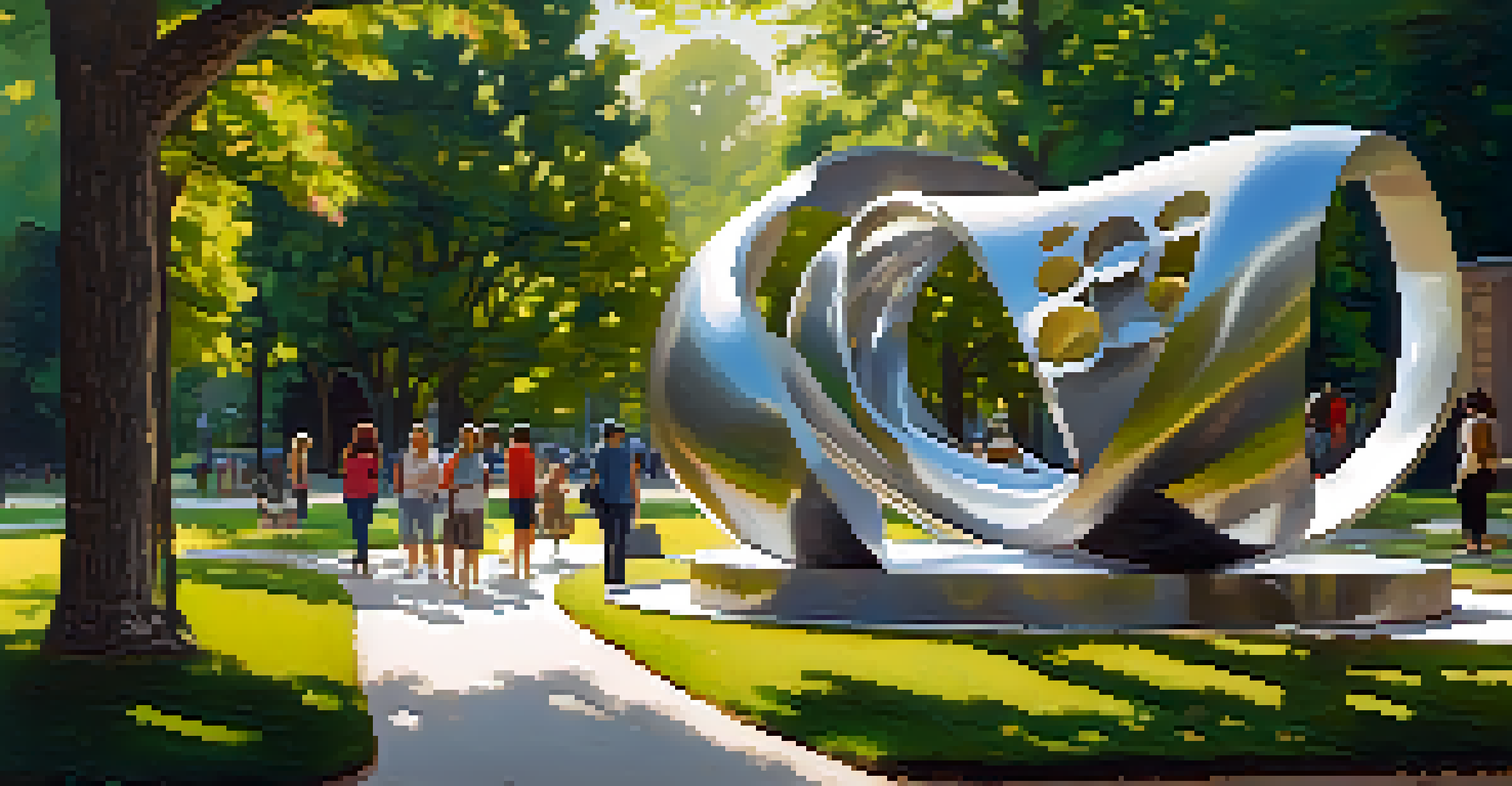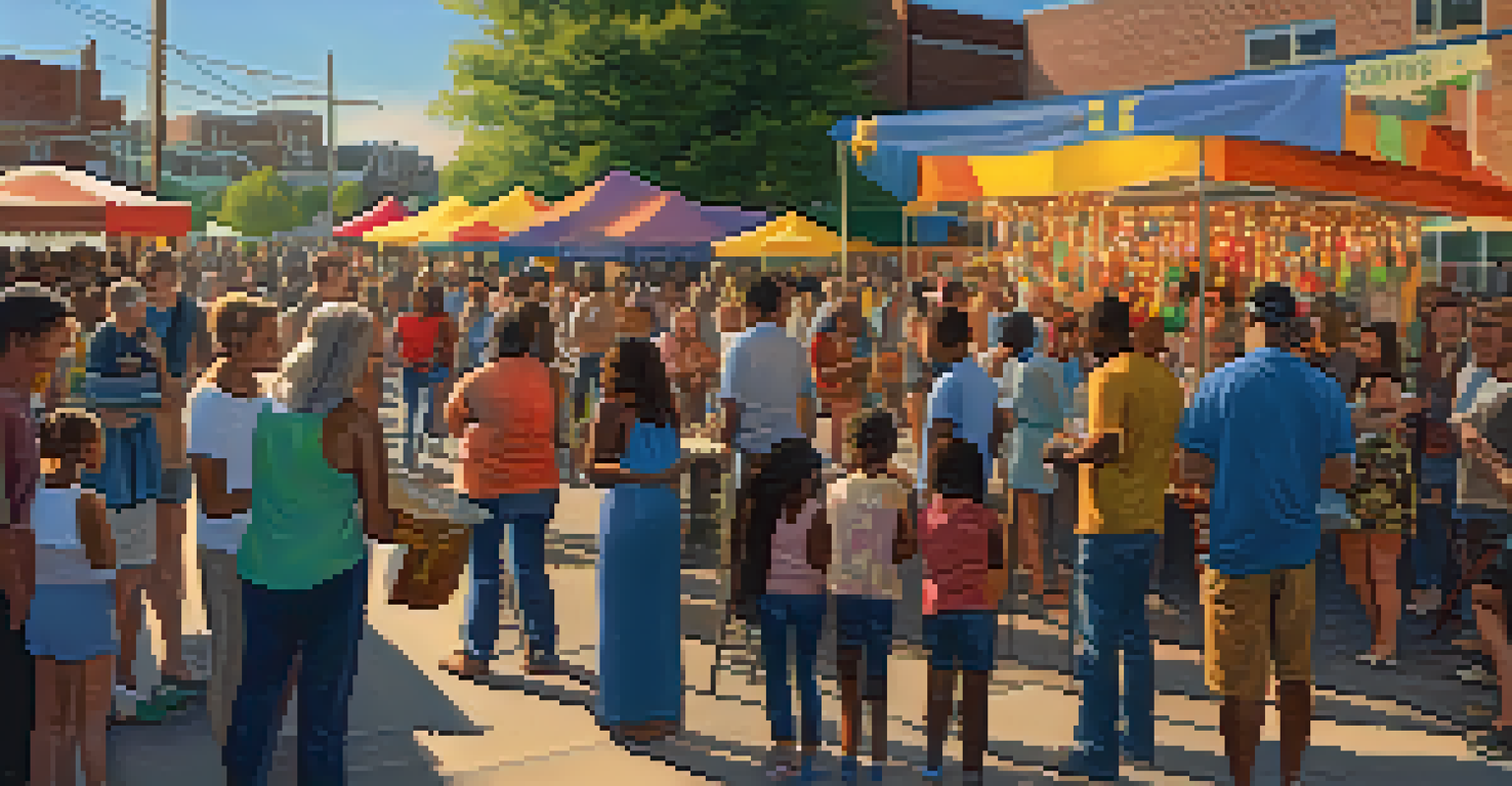Exploring Georgia's Public Art Projects: A Community Perspective

The Importance of Public Art in Georgia Communities
Public art plays a vital role in enhancing the cultural landscape of Georgia. It sparks conversations, brings people together, and often reflects the unique identity of a community. From vibrant murals to interactive sculptures, these artistic expressions add character and vibrancy to public spaces.
Public art is a way to create a sense of place and identity in a community.
Moreover, public art can transform ordinary locations into extraordinary experiences. Imagine walking through a neighborhood and encountering a stunning mural that tells a local story or a sculpture that invites you to interact. Such experiences not only beautify the environment but also foster a sense of belonging among residents.
In Georgia, public art is not just about aesthetics; it's a way to engage the community in dialogue. These projects often involve local artists and residents, ensuring that the artwork resonates with the people it serves.
Highlighting Notable Public Art Projects in Georgia
Georgia is home to several remarkable public art projects that have gained national attention. For instance, the Atlanta BeltLine features an array of art installations that connect various neighborhoods, turning a former railway corridor into a thriving art corridor. Each piece tells a story, making the journey along the BeltLine an adventure.

Another standout is the 'Mural Project' in downtown Savannah, where local artists have transformed blank walls into captivating narratives of the city's history and culture. This project not only beautifies the area but also supports local talent, creating a sense of pride among residents.
Public Art Enhances Community Identity
Public art in Georgia fosters a sense of belonging and reflects the unique identity of local communities.
These projects exemplify how public art can serve as a catalyst for community engagement, drawing both locals and tourists to explore and appreciate the artistic talent within Georgia.
Community Involvement in Public Art Initiatives
One of the most compelling aspects of public art in Georgia is community involvement. Many projects begin with input from local residents, ensuring that the artwork reflects their values and experiences. This collaborative approach helps foster a sense of ownership and pride in the finished piece.
Art is not what you see, but what you make others see.
Take the 'Art on the BeltLine' project, for example, which actively encourages community participation in its planning stages. Residents can express their ideas and even volunteer to help artists during the installation process, making the art feel like a collective achievement.
When communities come together to create and support public art, it strengthens social bonds and enhances local identity, making art not just an embellishment, but a fundamental part of community life.
Public Art as a Tool for Social Change
Public art in Georgia often addresses pressing social issues, serving as a powerful tool for change. Artists use their work to ignite conversations about topics like racial equality, environmental sustainability, and mental health. These artworks can challenge perceptions and inspire action within the community.
For instance, the 'Sculpture for Social Justice' project in Atlanta features installations that confront systemic issues and promote dialogue around equity. Such initiatives not only raise awareness but also empower community members to engage in activism and advocacy.
Local Artists Drive Public Art Success
Engaging local artists in public art projects ensures authenticity and strengthens connections within the community.
By embedding social commentary within public spaces, these art projects encourage ongoing discussions and invite communities to envision a better future together.
The Role of Local Artists in Public Art Projects
Local artists are the lifeblood of Georgia's public art scene. They bring authenticity and a deep understanding of the community's culture and history to their work. By involving local talent, public art projects can resonate more profoundly with residents and visitors alike.
Take the example of muralist Greg Mike, whose vibrant works throughout Atlanta reflect both the urban landscape and the local culture. His pieces not only beautify spaces but also engage the community in discussions about art and identity.
Supporting local artists not only enhances the quality of public art but also nurtures the local economy, creating a win-win situation for both creators and communities.
Challenges Faced by Public Art Projects
Despite their many benefits, public art projects in Georgia often face significant challenges. Funding is a major hurdle, as many initiatives rely on grants, donations, and community support to bring their visions to life. This can limit the scope and scale of projects that artists can undertake.
Additionally, navigating the approval processes for public installations can be daunting. Artists and organizers must often work with local governments and stakeholders, which can lead to delays and obstacles in execution.
Public Art as a Catalyst for Change
Art installations often address social issues, sparking important conversations and encouraging community activism.
Despite these challenges, the passion and determination of artists and community members continue to drive public art initiatives forward, proving that art is worth the effort.
Future Directions for Public Art in Georgia
The future of public art in Georgia looks promising, with ongoing initiatives aimed at expanding artistic expressions in public spaces. As communities become more aware of the impact of art, there is a growing desire to integrate it into urban planning and development.
Innovative projects are emerging, such as interactive installations that respond to the community's input or digital art that engages residents through technology. These advancements showcase how public art can evolve and adapt to contemporary needs.

By continuing to prioritize public art, Georgia can ensure that its communities remain vibrant, inclusive, and reflective of the diverse voices that call the state home.